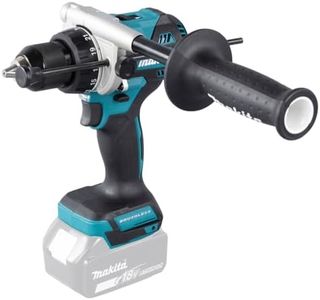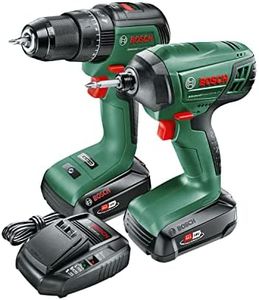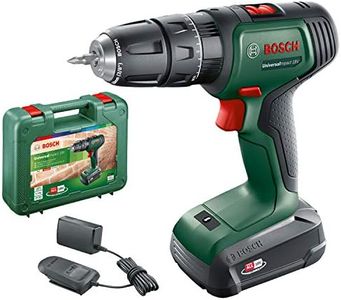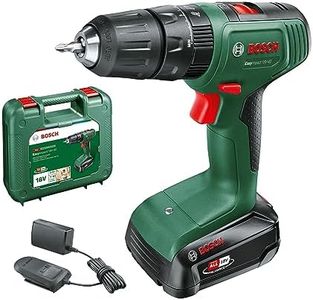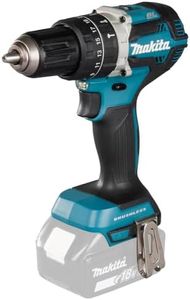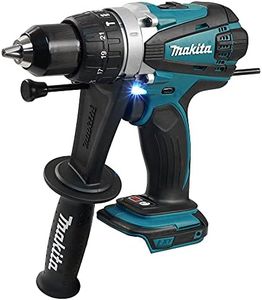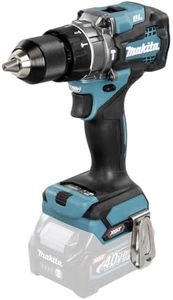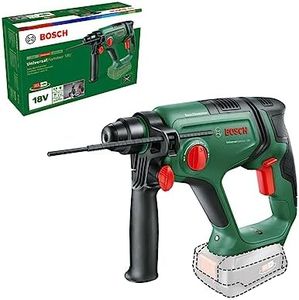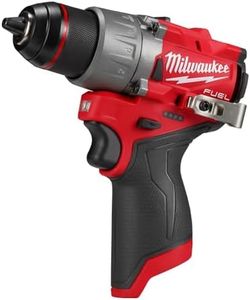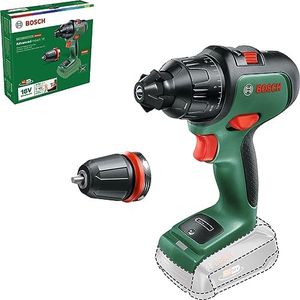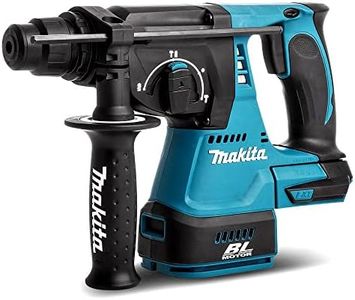We Use CookiesWe use cookies to enhance the security, performance,
functionality and for analytical and promotional activities. By continuing to browse this site you
are agreeing to our privacy policy
10 Best Cordless Hammer Drills
From leading brands and best sellers available on the web.By clicking on a link to a third party's website, log data is shared with that third party.
Buying Guide for the Best Cordless Hammer Drills
Choosing a cordless hammer drill can seem intimidating because of the many features and technical terms. The key to making the right choice is to understand what each important specification means, and how it connects to the types of jobs you want to tackle. Start by thinking about the materials you’ll mostly be working with—like wood, metal, or concrete—and how frequently you’ll be using the tool. Once you know your needs, you can focus on the main specs to find a drill that combines performance, comfort, and suitability for your projects.VoltageVoltage refers to the power of the drill's battery, usually measured in volts. Higher voltage means more power and the ability to handle tougher tasks like drilling into masonry or concrete, while lower voltage models are lighter and easier to handle, great for light-duty jobs. You’ll often find choices like 12V, 18V, and 20V. Pick a lower voltage for occasional light work and household tasks; go for higher voltage if you expect to work with hard materials or need more performance for frequent use.
Battery Capacity (Ah)Battery capacity, shown as amp-hours (Ah), measures how long the battery can run before needing a recharge. Larger numbers mean more run time. Where a 1.5Ah battery is lightweight and good for quick tasks, a 4.0Ah or higher battery is heavier but lasts longer between charges. If you plan on using your drill for extended periods, look for higher capacity; for short, occasional use, a lower capacity battery will keep things lighter and more manageable.
Hammer FunctionThe hammer function adds a rapid pulsing action to the rotation, helping the drill break through tough materials like concrete or brick. Some drills let you switch the hammer mode on or off for versatility. If you expect to work on masonry, make sure your drill has this feature. If you’re mostly using it on wood or metal, the hammer setting may not be as crucial.
Chuck SizeChuck size is the diameter of the drill bit the tool can hold, usually measured in millimeters or inches. Common sizes are 3/8 inch and 1/2 inch. Larger chucks accommodate bigger bits for heavier-duty work, whereas smaller chucks are sufficient for lighter, general use. Choose bigger if you plan on using large or specialized bits, and smaller if you’re doing basic home tasks.
Torque SettingsTorque is the rotational force the drill can provide, adjustable with different settings so you can match the tool’s force to the job. More torque is useful for tough screwing and drilling jobs, less torque helps avoid damaging delicate materials. If you need versatility for a range of materials and tasks, look for a drill with many adjustable torque settings; if your work is similar each time, fewer options might be enough.
Speed ControlSpeed control lets you adjust how fast the drill spins, shown as revolutions per minute (RPM). High speeds drill faster in softer materials, while low speeds help when more control or torque is needed. Drills with two or more speed ranges offer more flexibility. Pick a drill with variable speed if you’ll be working with different materials or need more precision.
Weight & ErgonomicsThe weight and shape of the drill affect comfort, especially if you’re using it for long periods or in tight spaces. Heavier drills typically offer more power, but they can cause fatigue. Lighter, ergonomically designed models are easier to handle and reduce strain. If mobility and comfort are important, go for a lighter model; if power is your priority and you won’t use it for long stretches, a heavier drill could be suitable.
